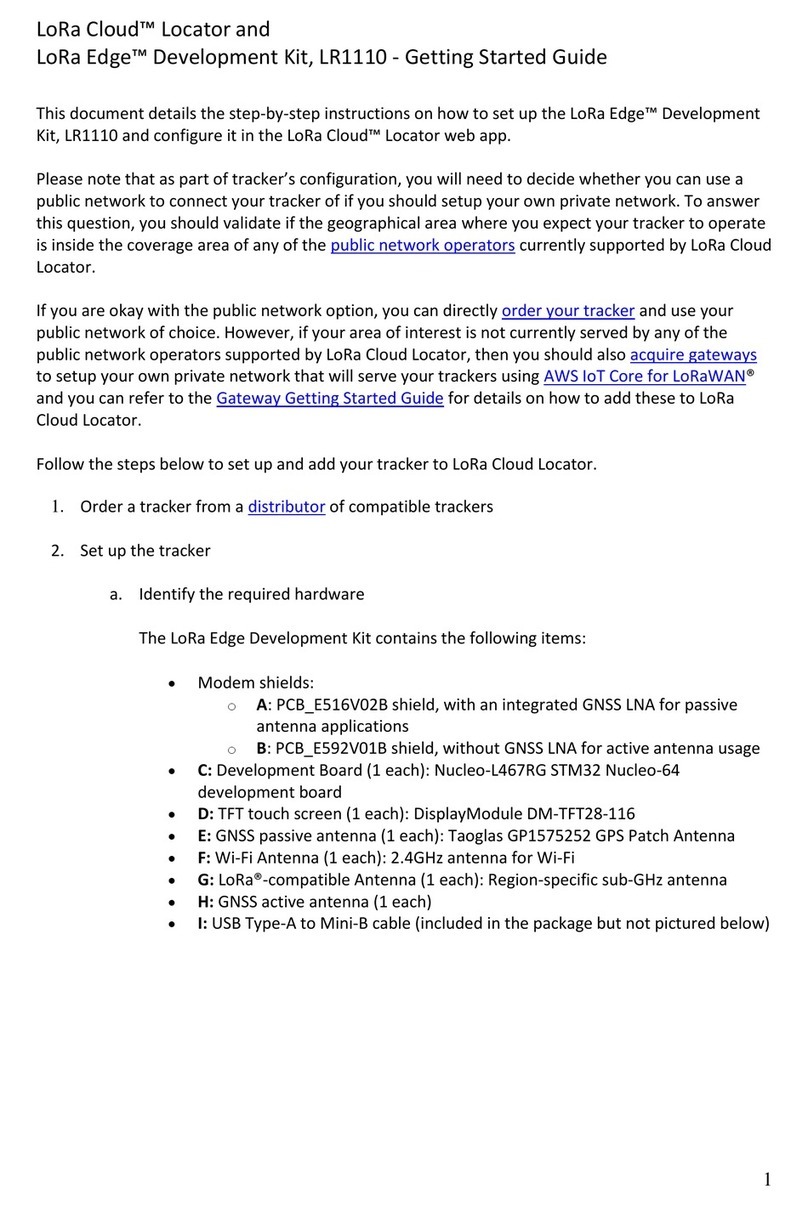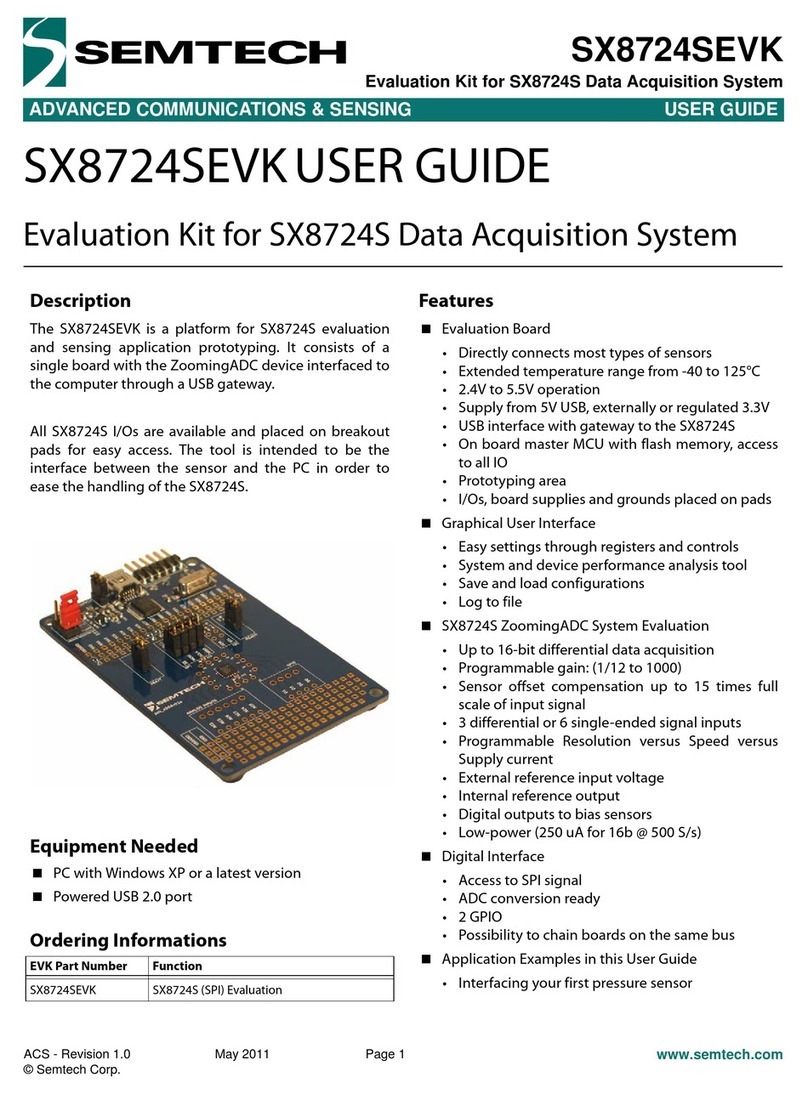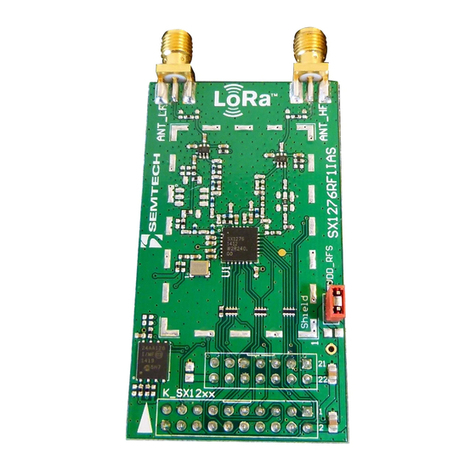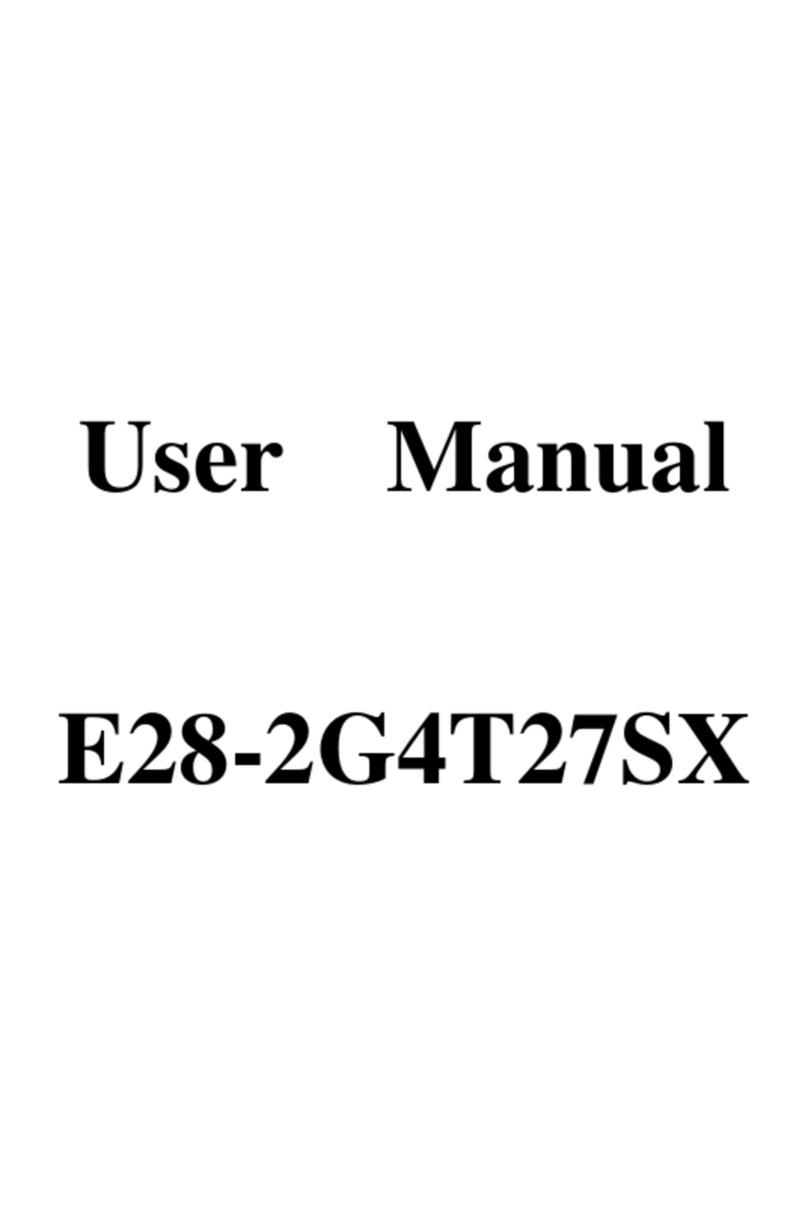
SH3000 User Manual
Preliminar
3
SH3000UM version 0.95 2002-08
Copyright ©2002 Semtech Corporation
Table 1: SH3000 MicroBuddy™ Pin Descriptions
Pin Name Type Function
1 VSS Power Ground, 0 V. All VSS pins and TEST (VSS)pin must be connected together.
2 VREG Power
Output of internal voltage regulator, 2.2 V nominal. This pin can power external
loads of <5 mA. If load is “noisy,” it requires a bypass capacitor. May be left
unconnected or used as a high logic level signal for CLKSEL pin (see below).
3 VDD Power Main power supply, +2.3 to +5.5 V.
4 VBAK Power
Backup power supply for real-time clock, +2.3 to +5.5 V (+1.8 to +5.5 V typical).
This voltage can be higher or lower than VDD. Connect a backup battery or backup
capacitor (with external recharge circuit). Connect to VDD if not used.
5 XIN Analog In
6 XOUT Analog Out
Oscillator pins for an optional external low-frequency crystal, typically a 32.768 kHz
watch crystal with nominal 12.5 pF load capacitance. Keep open or connect to VSS
if not used.
7 CLKSEL Digital In
A logic low level selects the internal 32 kHz RC oscillator (CLKSEL tied to VSS). A
high state on this pin selects the 32 kHz crystal oscillator (CLKSEL is connected to
VREG). The SH3000 always starts up using the internal 32 kHz RC oscillator. If
CLKSEL is high, the internal 32 kHz clock switches to the crystal oscillator once it
has stabilized, and RC oscillator is disabled for power conservation.
Do not connect CLKSEL to any signals except VSS or VREG. CLKSEL must not be
left open.
8 VSS Power Ground, 0 V. All VSS pins and TEST (VSS)pin must be connected together.
9 RREF Analog Optional 1 MOhm external bias resistor for the internal 32 kHz RC oscillator. Can
be used to set, trim or modulate the internal RC oscillator. Keep open if not used.
10 NRST Digital Out
Active low system reset output. Asserted with a strong low state when a reset
condition occurs. Weakly pulled to VDD internally when not active. This signal is
valid for VDD as low as 1 V. Keep open if not used.
11 RST Digital Out
Active high system reset output. Asserted with a strong high state when a reset
condition occurs. Weakly pulled to VSS internally when not active. This signal is
valid for VDD as low as 1 V. Keep open if not used.
12 TEST (VSS) Digital In Factory test enable. All VSS pins and TEST (VSS)pin must be connected together.
13 CLK32 Digital Out
Buffered internal 32 kHz clock, derived according to the CLKSEL pin setting. This pin
uses backup power for the buffer when VDD is not present. When driving high, this
signal is either at VBAK or VDD (if VDD is higher than the reset threshold). When
enabled, this signal runs continuously independent of CLKOUT activity. Minimize the
external load to reduce power consumption during backup operations. When
disabled, this pin is driven to VSS. Keep open if not used.
14 IO/INT I/O
Serial communications interface and interrupt output pin. This pin is internally
weakly pulled to the opposite of the programmed interrupt polarity. For example, if
interrupt is programmed to be active low, this pin is weakly pulled to VDD when
inactive. Keep open if not used.
15 CLKIN Digital In
Clock activity sense input. Used to detect when the target microcontroller enters
stop mode (which disables its clock). Connect to the microcontroller’s clock output
or oscillator output pin. Connect to VSS when not used. CLKIN must not be left
open.
16 CLKOUT Digital Out Programmable high-frequency clock output. Connect to the target microcontroller’s
clock input or oscillator input pin. Keep open if not used.






























